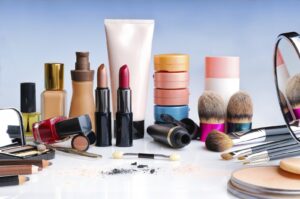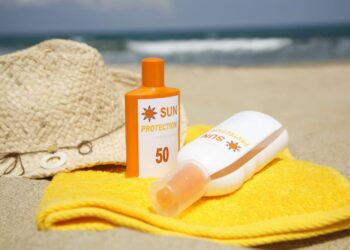
A recent comprehensive analysis of beauty and personal care products reveals that roughly one-third of the approximately 318,000 ingredients used lack publicly available toxicological profiles, and about 45 high-risk chemicals are commonly included in these items.
ChemForward, a non-profit advocating for ingredient transparency in beauty products, analyzed 8,500 items and found several common toxic chemicals associated with hormone disruption, cancer, lung irritation, and other health concerns.
This report aims to serve as a basis for industry efforts to address information gaps, eliminate hazardous substances, and promote safer alternatives in product formulations.
The large number of ingredients without toxicological profiles underscores the difficulty of avoiding harmful chemicals in cosmetics and personal care products. However, experts remain optimistic, as only a fraction of the 318,000 chemicals are essential to the products’ functionality.
“We can narrow down the essential chemicals required for product performance to a manageable number, which fuels optimism,” says Bill Walsh, director of the Safer Chemistry Impact Fund, which supports this initiative.
Many beauty and personal care brands are proactively working to meet safety standards ahead of regulatory mandates. Public health advocates have long called for stricter federal regulation of toxic chemicals in personal care products, though recent state-level legislation has begun addressing substances like PFAS, phthalates, and other toxic compounds.
The report sourced data from several chemical databases, including the European Chemicals Agency, and will be transformed into a “centralized repository” of hazard information accessible to beauty and personal care companies. ChemForward also introduced a chemical grading system, where toxicologists assess the safety of these ingredients.
ChemForward found that certain widely used ingredients, such as cyclopentasiloxane, red 30, and butylated hydroxytoluene, pose significant health risks. These chemicals serve multiple purposes—preservatives, colorants, emulsifiers, and fragrances, and are often used to enhance application, reduce drying time, or aid ingredient absorption.
The report identifies safer alternatives for many hazardous chemicals and will prioritize assessment of high-use chemicals lacking profiles. Notably, mica was found in 63% of products analyzed, trimethylsiloxysilicate in 21%, and nylon-12 in 20%.
One challenge in tackling the issue is the confidentiality of chemical profiles that many companies legally protect. The program will assess health risks without disclosing formulations.
Companies are encouraged, though not required, to phase out high-risk chemicals, contribute to the database, and adopt safer substitutes. Major participants include Ulta Beauty and Sephora.
“This is a pivotal moment where the industry is actively seeking safer options, and by pooling data and collaborating, we can streamline the process of identifying safe ingredients,” Walsh adds.















































